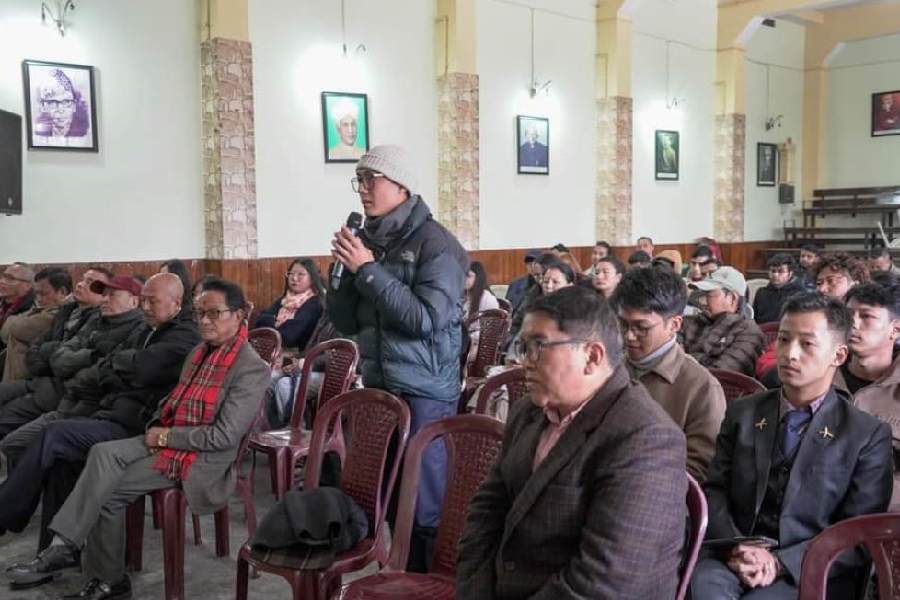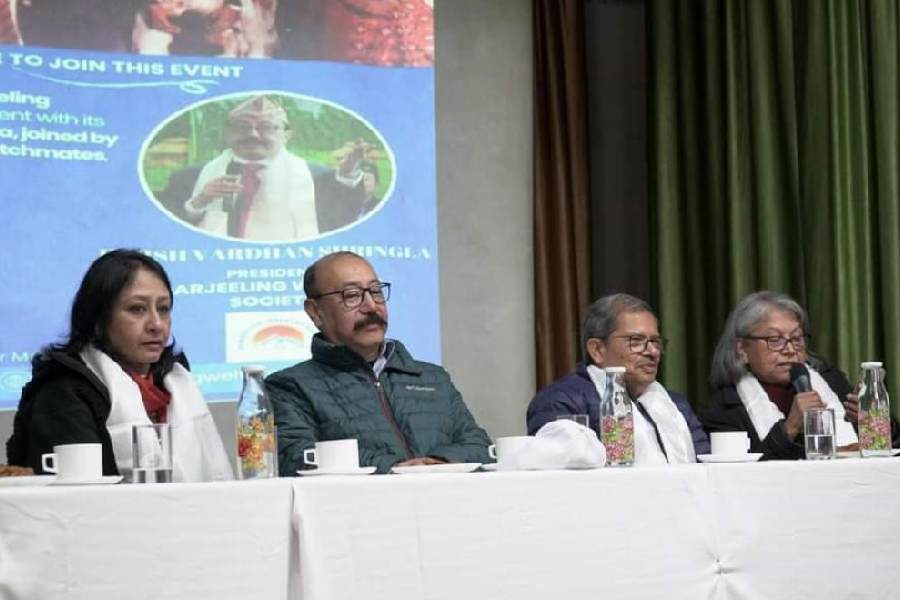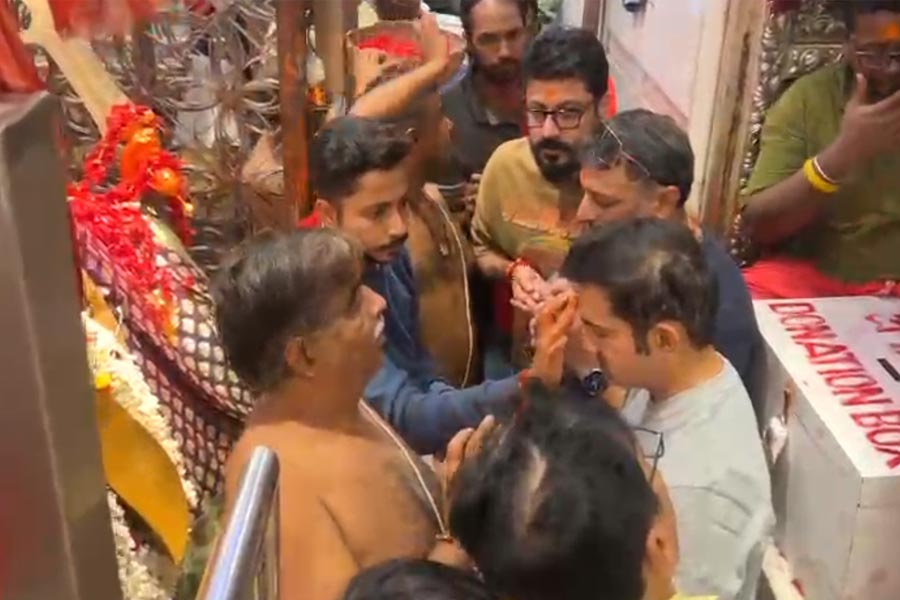Darjeeling was in a rare conversation with five former Indian ambassadors, particularly from the IFS batch of 1984, at the Southfield College auditorium on Wednesday.
This unique initiative was powered by Harsh Vardhan Shringla, a former Indian ambassador with roots in Darjeeling.
Shringla’s nonprofit, the Darjeeling Welfare Society, is mentoring 61 students from Darjeeling for the civil services examination.
Shringla had roped in his batchmates Gautam Bambawale, Debnath Shaw, Mukta Tomar and Rajesh Kumar Sachdeva to provide a sneak peek into the life of a diplomat to motivate young aspirants.
During the one-and-a-half hour session on Wednesday, the diplomats also provide tips on how to prepare for one of the toughest examinations of the country, the civil services.
Spouses of three of the diplomats, Amita Bambawale, Dahlia Shaw and Promila Sachdeva, who were also part of the panel, also talked to the audience about their roles, including the constant ability to adapt to new cultures.
The Telegraph highlights some anecdotes shared by panelists on the different hats diplomats have to wear when they represent India abroad.
Turning the tables
Gautam Bambawale, former Indian ambassador to China, Bhutan and former Indian high commissioner to Pakistan.
When I was in Islamabad, there was this issue ofso-called Indian spy Kulbhushan Jadhav. I was called by the foreign ministry of Pakistan for them to give me a shouting. They shouted, I also shouted. We used to do it all the time. We would stand strong for India’s position all the time.
But what was interesting (this time) was that the (Pakistani) foreign ministry had told the media that I would be summoned. They (the media) had gathered and during my interview I said that Kulbhushan Jadhav was an ordinary businessman from Iran and completely innocent.... I got a platform to air my views.
The ISI was very angry with the foreign ministry for giving me a platform. The media in Pakistan slowly tried to downplay it but the Indian media had already picked it and our stand was known to all.

Students participate in the interaction with former ambassadors in Darjeeling on Wednesday.
Human diplomacy
Debnath Shaw, former Indian ambassador to Azerbaijan and high commissioner to Tanzania, who did his schooling from Darjeeling at Bethany and St Joseph’s School (North Point)
Once when I was posted in China, an official called me and said that a man from a remote western China had travelled over 3,000km to visit our office. He spoke a dialect which even our interpreters found difficult to comprehend.
After communicating in writing, we found out that he had approached us sensing a thaw in India-China relations after the 1960s. Apparently one of his brothers had been left back in India.... He only knew his brother’s name and his restaurant.
We relayed the message to our counterparts in India and after a few months his brother and the restaurant that he owned were located in Guwahati.
Many months later, the man once again visited our embassy and this time he brought his produce, a sackful of nuts, to express his gratitude.
Being on time
Mukta Tomar, former ambassador to Germany
Just before my posting in Germany, I went to meet the current external affairs minister S. Jaishankar, my boss, to seek advice. He just said: “Never be late. That’s the lesson for today.” I was disappointed as I was looking for a pep talk and I had prepared hard.
Later I learnt that hehad earlier taken a delegation to another European country and the CEO of the company was a German. It seems that the (Indian)delegationhappened to be five minutes late for the meeting. Thecompany (headed by the German CEO) seemed to have turned down the (business deal) saying that if you can’t come to a meeting ontime, how can we depend on you to provide us with goods and services we need on time. The attitude that many of us have (in India and some other countries, too) is not okay. These are the small things that matter when you deal with people.
Building India abroad
Rajesh Kumar Sachdeva, who has worked in diplomatic missions in Egypt, Yemen, Netherlands, Sri Lanka, Sweden, Singapore, Cambodia and Bulgaria.
How do you design embassies and ambassador’s residences?
You cannot just take an Indian architect in places like Bhutan where they have their own rules.
So, one needs to use both Indian and local architects. Things like the dome that you see at Raj Bhavan in Darjeeling here, arches, veranda etc, give you that Indian feeling.
We also ensure that artifacts like statues of Nataraja, vessels or items from different states are kept at the embassy to give an Indian feel.
So, our brief to architects is to bring Indianness in the structure, maybe by using red stone, so that if someone passes through, they should say this is Indian.
Sometimes we havegot it wrong. In a placewhere it rains a lot, a roof was made flat and it leaked throughout.











